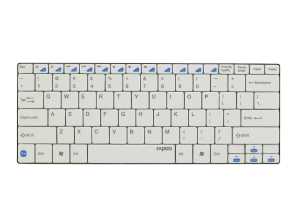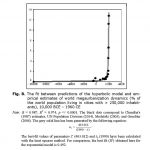IIDE Proceedings 2011 – Dealing With Differences In Framing In Multi-Actor Interactions In Water Management
 Abstract
Abstract
The development of water policy is characterized by the involvement of many actors. These actors have different interests, knowledge, values, cultural backgrounds, perceptions and so on. Often, these differences result in policy controversies that interfere with the implementation of water policy. Controversies arise and are dealt with in multi-actor interactions. The communication of water managers directly influences the development of these controversies. However, the literature on environmental policy and governance does hardly address the dynamics that occur in the interactions between stakeholders. This paper gives insight into the communication strategies that water managers apply in conversations with other actors and how these strategies affect the course and outcome of an interaction. A case study reveals that the observed water managers use two different types of strategies to deal with different and incompatible views of their conversation partners: frame amplification and frame incorporation.
Keywords
Interaction, Framing, Alignment, Conversation, Change
1. Introduction: policy controversies
The development and implementation of water policy involves the involvement of many actors. The need for collaboration is based on the notion that the resources, responsibilities and competencies for water management are scattered over a multitude of institutional layers and private actors (Rault, 2005). The collaboration between actors comprises the discussion of issues, the transformation of relationships and responsibilities, the connection of competences, the formation of networks and the development of a collective memory (Forester, 1999). During the collaboration, it is most likely that policy controversies arise, because of the many differences between the actors involved (Schön and Rein, 1994). Actors have different interests, knowledge, values, cultural backgrounds, perceptions and so on. As soon as actors start to communicate, these differences start to complexify their interaction. In this paper, we consider the policy implementation as an on-going negotiation process where actors negotiate alignments (Aarts and Leeuwis, 2010). This process shapes the development and implementation of policy. During their interactions, actors give rise to policy controversies and feed and settle them. As the initiator and owner of the policy process, a water manager has find a way to deal with the differences that drive the policy process. Issues are fragmented and sometimes conflicting, the roles and responsibilities of the participants are not clear, as is the policy process itself. Furthermore, the multi-actor interactions take place in different institutional contexts, which means that the social rules to deal with differences are not shared among the participants. Instead, the participant themselves co-develop their roles and the rules for engagement. This implies that the communication of a water manager matters. It can create or close spaces for change in the process. This paper aims to gain insight into the communication of a water manager as a representative of a public authority and how this affects the policy implementation. However, the literature on environmental policy and governance treats these interactions as black boxes. A common approach in this literature is to consider the policy process as a learning process, whereby actors fill in knowledge gaps (Agyris, 2003) and start a deliberation (Habermas, 1981) on conflicting societal values supported by effective means of communication (Newig, 2010). It remains unclear however, how such a learning process functions in the every day practice of environmental governance.
By this study, we make a start to open up this black box in order to gain insight into the course and outcome of interactions. This involves a shift from a macro level that considers institutions and organisations towards a micro level that considers interacting individuals. The theory of interactional framing suits our aim. The framing concept ‘draws the attention to the concrete interactions where actors bring in their conceptions of problems and possible solutions, and how they affect each other’s frames in and through a developing relationship’ (Dewulf et al., 2005: p.117). Read more
IIDE Proceedings 2011 ~ Exploring Dooyeweerd’s Aspects For Understanding Perceived Usefulness Of Information Systems
 Abstract
Abstract
The degree to which people believe using a system will enhance their job performance: this is the definition of Perceived Usefulness (PU), one of the main constructs in Davis’ Technology Acceptance Model (TAM). TAM was specifically meant to explain computer usage behaviour and to predict individual adoption and use of new IT to answer the question of why people do not make more use of IT. Over the past two decades many studies reiterated the importance of PU by adding various constructs to it. However PU is regarded as a ‘Black Box’ that needs to be opened. Barki (2008) draws our attention to the importance of constructs and approximately 70 constructs related to PU have been collected by Yousafzai et al. (2007). However Barki argues for the reconceptualization of constructs. First we need to know what is important in each construct. Dooyeweerd’s philosophy of everyday life assists, by his suite of aspects, to find the meaning of each construct and to show a way of reconceptualizing constructs that overcomes seven problems with Yousafzai et al.’s set. This employs a new approach, which is expected to lead to a more penetrating understanding of IS usefulness.
Keywords:
Technology Acceptance Model, Perceived Usefulness, Dooyeweerd, Aspects, Construct reconceptualization.
1. Background
Fred Davis’ (1986) Technology Acceptance Model (TAM) was introduced and developed under contract with IBM Canada, Ltd. where it was used to evaluate the potential market for a variety of then emerging PC-based applications in the area of multi-media, image processing, and pen-based computing in order to guide investments in new product development (Davis and Venkatesh, 1995). TAM was specifically meant to explain computer usage behaviour and to predict individual adoption and use of new ITs (Davis, 1989) . It posits that individuals’ Behavioural Intention (BI) to use an IT is determined by two beliefs: perceived usefulness (PU), defined as “The degree to which an individual believes that using a particular system would enhance his or her job performance” (Davis, 1989), and Perceived Ease of Use (PEOU), defined as “The degree to which an individual believes that using a particular system would be free of physical and mental effort” (Davis, 1989). It further theorizes that the effect of external variables (antecedents or constructs), such as Design characteristics, on Behavioural Intention will be mediated by PU and PEOU. According to Davis, one of the key purposes of the TAM was to provide a basis for tracing the impact of external factors on internal beliefs, and this has implied that without a better understanding of the antecedents of PU and PEOU practitioners are unable to know which levers to pull in order to affect these beliefs and, through them, the use of technology. Read more
IIDE Proceedings 2011 ~ Using Dooyeweerd’s Aspects To Enrich Our Understanding Of Idolatry
 Abstract
Abstract
This paper shows how Dooyeweerd’s aspects of reality are related to Goudzwaard’s notion of idolatry and discusses how Dooyeweerd’s aspects contribute to the understanding of idolatry as a cause of problems in e-government.
NOTE: This paper is a description of ongoing research. Work on the paper could not be completed because of family commitments and the authors request that it should be treated as ‘work in progress’. The authors would also like to express their apologies for any lack of clarity in the paper.
Keywords: Idolatry, Dooyeweerd, Aspects, ICT
1. Introduction
In relation to IS projects and particularly, e-government projects, several problems have been noted. Some researchers have identified idolization or idolatry of technology as a potential cause of the problems (Gauld & Goldfinch 2006; Heeks 2006). However, what idolization is has not been clearly explained. Krishnan Harihara & Basden (2008) developed Goudzwaard’s notion of idolatry to account for many of the problems in e-government projects that are related to idolization, and this gave precision of thought. Krishnan Harihara & Basden (2010) extended this by arguing that each element can take on a positive form, which is valid and may be expected to be present in successful projects. This made Goudzwaard’s notion of idolatry more complete as a tool with which to study e-government, relevant to both success and failure, but the tool was not operationalized. The current paper operationalizes the notion of idolatry, using Dooyeweerd’s (1955) notion of aspects, so that e-government projects and literature about e-government can be critically evaluated.
2. Background
Heeks (2006) identifies several attitudes that might be adopted towards ICT:
* Ignore: ICT is not seen as part of the reform agenda. Even when computers are available, they remain unused.
* Isolate: the procurement and deployment of ICT the sole responsibility of the technical staff.
* Integrate: understanding the potential of ICT, tempered by recognition that ICT can at best play a secondary role.
* Idolise: structuring the reform process around ICT. ICT forms the core of the business of government. We see this in the vision embodied in the term ‘transformational government’.
Heeks warns that wherever an attitude of idolisation is noticeable, the possibility of failure is very high. Though he gives some examples, he does not discuss the nature of idolisation.
The research is based on the following passage from Goudzwaard (1984, p.21):
“First, people sever something from their immediate environment, refashion it and erect it on its own feet in a special place. Second, they ritually consecrate it and kneel before it, seeing it as a thing which has life in itself. Third, they bring sacrifices and look to the idol for advice and direction. In short, they worship it. … Fourth, they expect the god to repay their reverence, obedience and sacrifice with health, prosperity and happiness.” Read more


